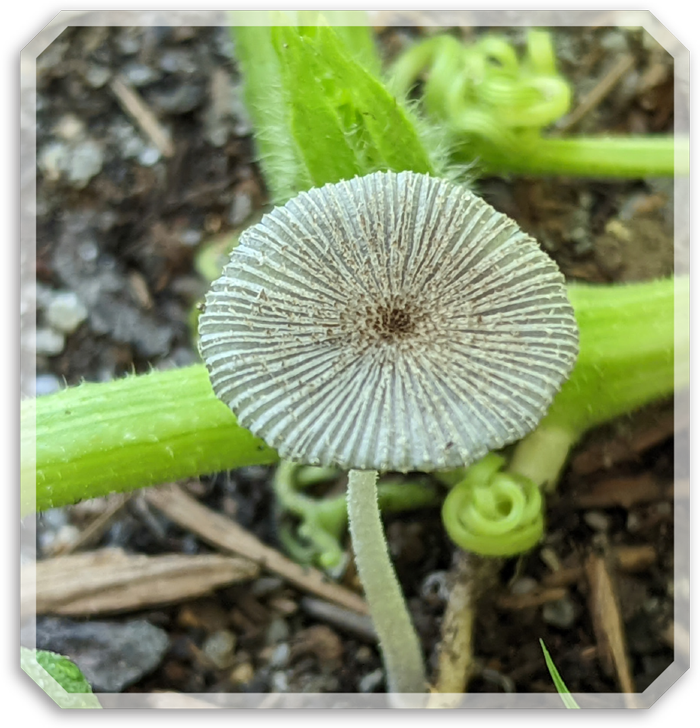
Michelle Moody

ast summer, my husband built some garden boxes for us. What amazed me most about the entire process was his ability to recall and use the algebra and geometry he learned in school so many years ago. I watched with a deer-in-headlights look as he measured diagonally, wrote down numbers, and diagrammed his calculations on paper.
I told my daughter, “Now, this is why we have to do algebra and geometry!”
The garden box project was a perfect example of how science is integral to our everyday lives. Undoubtedly, the foundation a curriculum provides is critical, but how do we help our children move beyond the science text and integrate science into their daily rhythm?
How do we help them develop the confidence in their observation and science knowledge to take on those garden box projects as adults?
It starts with providing them opportunities at a young age to discover and ask questions about how the universe works and how the world around them works. God’s creation is full of amazing details we can miss if we lack the opportunity and confidence to ask questions, test ideas, and observe.
Here are some ideas for fostering our children’s innate curiosity and helping them observe the details, intricacies, and beauty God has designed for us to discover and enjoy. Even in our garden box project, interesting patterns were found in the mathematics used.
This little mushroom held some mighty big science lessons. With some observation and research, we learned several facts about it including:
- The type of mushroom it was
- How long it took to develop and then die
- How it produced and dispersed spores
- What its presence indicated about soil health
- Whether it was edible or not
We also discussed how we had amended the soil with chicken and cow manure before planting and the beneficial effects we were now seeing. This led to research into why farmers rotate fields and crops and what we could do to our garden soil at the end of the summer growing season to prepare for a fall crop.
Planting a garden, even a container garden, provides opportunities to integrate science into the rhythm of everyday life and develop science-based life skills our children will use for years to come.
Let’s look at some areas of science and how to engage our children with observation and simple activities.

- Find out what the USDA gardening zone is for your geographical location. (I didn’t learn our zone until we started homeschooling. It’s incredible how much we learn as homeschooling parents!)
- Have your children research insects that are beneficial to your plants if you are growing a garden.
- Look up what insects are harmful to your garden. What features do these insects have that make them harmful to plants? How can you naturally repel harmful insects? Research companion planting or the flowers (like marigolds) that repel certain garden pests.
- Have your children journal what they learn and possible plants to grow in your garden.
- Keep an insect journal to record the insects seen, what they look like, whether they are beneficial or harmful, and when they seem most active.
- Research a cold-weather garden. What can you expect to grow successfully during cooler months for your garden zone?
- Observe the garden at night. We took a flashlight out to our garden at night and found hundreds of Japanese beetles feasting on green beans. We knew they were active during the day but learned something new about their nocturnal activity!
- Keep a to-do list of gardening activities by season. For example, when do you need to amend the soil to keep it healthy? When should seeds be started for the next growing season?
- Research types of seeds. What are heirloom seeds? Can you save seeds and use them for the next growing season?
- Maintain a seed planting log. When did seeds get planted? What was planted and how long did it take for the seeds to germinate? When were the seedlings transplanted into the garden?
- Research herbs, what caterpillars they might attract, or what harmful insects they repel.


Here are some ideas to introduce and develop environmental science into daily life:
1. Research composting. We wanted to dip our feet into composting this year, so we purchased a small composting bin and put it away from our home in a partially sunny location. Could your children design and build a composting bin? Have them draw up a map of your yard and where the bin could be placed. As your children start to research composting, many good discussion questions will arise: What do we compost? How much green matter and brown matter should be added to it? Do we need to turn it? Should we add worms?
2. Learn about your climate and water conservation. Begin by looking up the answers to the following questions:
- What are the average rainfall amounts for your area?
- Is your area currently experiencing a drought?
- What issues do cities and/or homeowners face during a drought?
Then as a family you can discuss the issues. Ask your children: What could be a possible solution to the issues we face during a drought? How can our family conserve water? For example, could we capture rainwater? How?
This would be a great time to make a rain gauge and keep a simple rainfall chart. Instructions are in the Spring Activity Guide, along with a rainfall chart.
When our oldest was in sixth and seventh grade, our area was experiencing a severe drought, with fines being imposed for watering lawns and washing cars. The lakes that fed the municipal water supply showed alarming amounts of receding water levels, with a large area of cracked lake bed showing.
The science co-op I led did a research project investigating water conservation. The students were able to visit the city water department and gain additional knowledge about related issues facing the city due to the drought.
We tasked the students in our group to brainstorm a problem facing cities during a drought period and then build a prototype solution. They used Lego to build their prototype.
These are the types of projects and questions we can assign our children, especially in middle and high school grades, so they can be aware of issues, brainstorm creative solutions, and learn the related science.
3. Do some testing. Testing water is a fascinating project. Water testing kits can be purchased locally or online. Test your tap or groundwater, the water in a birdbath, and the water in a local pond or stream. Have your children journal the test results and make a chart of the results by location. Similarly, your children can also do soil testing.
4. Maintain weather logs. Weather logs are simply journals to record weather conditions in your area. Your children can keep track of the temperature, wind direction and speed, barometric pressure, and more.
5. Study the trees in your area over several years. Are there some trees that seem to be prone to blight? Are there trees that seem to be prone to storm damage?
Have your family keep a tree log and include:
- Draw the trees in your yard or at a local park during various seasons
- Record information based on the following questions: What types of trees do you have in your yard or area? What are the differences between deciduous and coniferous trees? What are ornamental trees? Take a walk around your neighborhood or park. Can you identify different types of trees?
- Record how the trees fare during windstorms, icy conditions, and heavy snowstorms.
- Note if you have any trees that ever get an insect infestation—for example, bag worms. Find out if there are other trees just like it around your neighborhood or town and whether this seems to be a common problem with them.
In our area of the country, Bradford pear trees suffer the worst during our frequent winter ice storms. These types of observation skills help our children understand how to plan a natural area to provide shade, shelter, or food for humans and animals. While a textbook will teach much about the biology of trees, by observing and trying things, our children understand the science of everyday life.
- What do you notice about the animals?
- Do they frequent bird feeders more or less?
- Do you see animals gathering food?
- Do you notice unusual birds stopping in your yard as they migrate south?
- What animal behaviors do you notice when winter temperatures arrive?
2. Research animals in your area that genuinely hibernate and those that go into a torpor state. Then you can use a nature journal to record what you learn about those animals and your observations about them. Ask questions like:
- What birds are around? What are they feeding on?
- When the trees lose their leaves, do you notice any animal nests in the trees? Are there any squirrel nests?
- What birds do you hear? Can you identify the calls using a bird app?
- Do you notice more activity the day before a snowstorm or a big drop in temperature? If you put out birdseed during cold weather, do you notice any changes in bird behavior as temperatures dip?
3. Make a toad habitat in a shaded, moist area of your yard. We found a candle burner at the thrift store and used it for a shelter. You can also use an old flowerpot on its side—place rocks and sticks around it. We kept a large jar lid near it filled with water when it was hot. If you have some grass, you can plant around it or transplant a very small patch so it provides some additional cover and moisture.
4. Research wildlife movement patterns in your area. We live in an area that, in the early 2000s, was one of the top three areas in the country for urban sprawl. Much hasn’t slowed, so we have seen major shifts in the deer, coyote, and bear populations. Your state’s wildlife office will have a wealth of information. Many have quarterly publications (for a small donation) that are packed with excellent information about wildlife research and patterns of behavior. We didn’t know until this past year that the coastal areas in our region are home to the largest black bear populations in the world. This type of everyday science information is helpful to know, especially if camping in that area!
Teaching our children how to ask questions, find reliable information, and observe the world around them are critical skills that will serve them for years. There are many ways to come alongside any formal science curriculum you are using and help your children develop the confidence and observation skills to become lifelong students in the science of everyday life!




